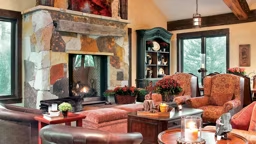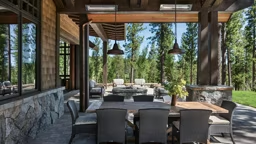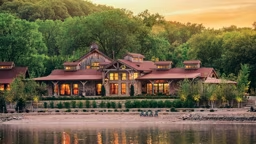
Nail holes. Saw kerf marks. Checking. This is the vocabulary of reclaimed wood flooring. So is this: The last operating brewery in Philadelphia. A Florida cigar factory. A Southern plantation that provided apples to troops of Robert E. Lee. Reclaimed wood flooring offers homeowners not only interesting vocabulary, but also enduring beauty, an environmentally friendly building alternative and a piece of history.
The Allure of Age
Reclaimed wood, sometimes called antique (technically at least 100 years old), salvaged or vintage, has many sources; from centuries-old barns to 1940s industrial plants. “It’s a tangible link to the past; a way to preserve history,” says Iain Harrison, marketing director for Pioneer Millworks, a Farmington, New York, based company that specializes in aged wood. Choosing reclaimed wood flooring is mostly a matter of design and personal taste, says Chris Sy with Carlisle Wide Plank Floors in Stoddard, New Hampshire. “There are no structural advantages or downsides. The main driver is whether you like the cracks, the signs of previous use.”
Among those signs are patina, the natural sheen wood develops from aging, and often saw marks, nail or worm holes, or “checks” (natural separations between wood fibers running parallel to the grain). Reclaimed wood flooring includes a variety of species, including some, such as chestnut and heart pine, that are now nearly depleted. Boards run from wide, rustic planks to narrow, finely grained timbers; lengths vary from a few feet to several yards.
The popularity of reclaimed wood has grown along with the green building movement: Recycling a durable, limited resource makes sense environmentally. “Last year we had a half-million board feet of wood that would have ended up in a landfill if we had not reclaimed it,” Harrison notes. Because of the wood’s limited availability and the labor-intensive reclamation process, its price can run up to double that of newly sawn wood, depending on the species.
To cut costs, some use reclaimed flooring in public living areas and newly sawn wood of the same species in private spaces, or less expensive narrow boards instead of wide planks. Care is required for installation. “The finishing techniques are not the same as with newly sawn wood,” Harrison notes. “If the installer doesn’t know what he is doing, he could ruin the wood’s patina and character.” Suppliers such as Pioneer and Carlisle offer installation advice, and Sy says a third of Carlisle’s customers install their flooring themselves.
How It Works: Transforming Old Wood
Turning the side of an old barn into high-quality flooring is not a simple process. Reclaimed wood must be checked for quality, sometimes by taking a core sample to determine its age and character. As the old structure is carefully dismantled, unsound wood is discarded. Solid wood is usually inventoried with information about its history, then examined by hand or metal detectors to reveal nails or other metal lodged in the wood. These fragments must be removed before the wood can be reworked. Paint is also removed before the wood is sawn into finished boards that are straight with a uniform thickness.
Kiln Drying
Then next step — kiln drying — is the trickiest. “Some beams may have been exposed to weather and have a higher moisture content than those kept inside, so we can’t just put them into the kiln together,” Sy explains. “We reintroduce moisture into the wood to bring all the pieces up to 16 to 17 percent moisture content, then dry them to 8 to 9 percent for normal use.”
Finishes
The boards can be pre-finished or finished on site. “We don’t recommend changing the natural color with a stain,” Sy says. “You can keep the wood’s character, but you lose the patina.” Iain agrees, also noting that the greater contrast between a stained color and the wood’s natural color may show through after wear. Sy recommends a high-resin tung oil that can be spot applied over bare spots or fully applied over an existing coat, eliminating the need to sand.
“Old floors lasted because they used oil and didn’t take off the flooring with sanding,” he notes. Harrison suggests tung oil for rugged style flooring and a water-based polymer for flooring with a more refined look. Once installed, maintenance is the same as for new wood flooring, says Sy, who recommends using vinegar and water for cleaning.
Choosing A Look You’ll Love: Wood Grade and Hues
Reclaimed wood flooring enhances virtually any style home. Wide planks with worm holes and saw marks are popular for lodge and farmhouse-style houses, while antique woods with clear vertical grains and few character marks may work well for more formal Colonial Revival homes or Victorian homes. For contemporary spaces, a current trend is to whitewash antique oak.
The characteristics of age, along with accessories, change the look. “In deciding which wood, look at how you want it to integrate with your palette, the tonal values that complement the rest of the color scheme,” Harrison suggests. “For example, with walnut cabinetry, consider a lighter floor to contrast or complement it.” Each species has a unique hue.
Carlisle Wide Plank Floors' most popular variety is the nutty brown antique oak. Its red-orange heart pine is second, followed by milled barn siding, a mix of mostly Eastern white pine with some spruce to create a warm, pumpkin-colored flooring. The wood’s grade also is important, Sy notes, citing Carlisle’s antique heart pine options as example. The company’s select grade provides formal, consistent color with few holes or character marks.
Premium grade (its bestseller) offers more character and color variation. Country grade is more casual, with greater color differences and character marks, while its most rustic "Grandpa’s Floors," usually reclaimed from mill floors, includes saw marks and dramatically rich color. Yet, it may be what Harrison calls “the expressive nature of the wood itself” that is most important. “In certain light, the pattern of the wood’s grain and its patina makes it dance,” he says. “It speaks to you.”
Choosing a Supplier for Reclaimed Hardwood Flooring
Old wood is not necessarily good wood, so know where your flooring is coming from. “There are no overarching grading standards for antique wood,” Sy cautions. “You might find people with an old barn trying to market low-quality wood that hasn’t been properly dried. You may need to call the exterminator.” Sy suggests carefully checking a supplier’s reputation and not relying upon small wood samples only. “Get photos, too. Go to job sites for a larger vision of the floor,” he urges. Ask whether the wood is kiln-dried, what that process entails and how the supplier ensures that the moisture content is consistent. And learn what the variation is between the boards, in terms of their width and length.
Finally, check how the supplier grades for consistency. “A barn from Ohio may be predominantly white oak with a rich patina, while a barn from Georgia will likely be red oak with a different grain and color,” Sy points out. “A mix of the two could create a wide range of character that would not have a cohesive feel.”
Select Suppliers:
Carlisle Wide Plank Floors Stoddard, NC
Carlisle offers reclaimed wood flooring, engineered wood flooring, and prefinished hardwood floors.
Chestnut Specialists Plymouth, CT
Chestnut Specialists delvers their hand-selected, kiln dried, custom-crafted reclaimed wood flooring anywhere in the country.
Colonial Plank Floors Colmar, PA
Colonial Plank Floors uses hardwoods from Pennsylvania and the surrounding states harvested using environmentally friendly practices.
Conklin's Authentic Antique Barnwood & Hand-Hewn Beams Susquehanna, PA
Specializing in an array of recycled lumber, including richly patinated flooring , hand hewn ceiling beams, beam mantles, custom crafted farm tables, and more.
Craftsman Lumber Groton, MA
Specializing in Wide Pine & Oak Flooring, Paneling and Custom Millwork.
Hull Forest Flooring Pomfret Center, CT
Southern New England's largest sawmill, custom milling wide plank flooring, staircase parts, and post and beam timbers. Since 1965.
Sylvan Brandt Lititz, PA
Sylvan Brandt salvages the finest vintage lumber from 17th and 18th Century barns and houses, then mills the lumber into unique floorboards.
Wide Plank FlooringBarbaroo, WI
Offering wide plank flooring, rustic and antique flooring crafted from reclaimed lumber and timbers salvaged from old antique barns, dead standing timber and industrial buildings.
Zeagler Farms Handcrafted Flooring Sylvania, Georgi
This family owned and operated company based in Sylvania, GA and Bluffton, SC specializes in handcrafted, specialty wood flooring.
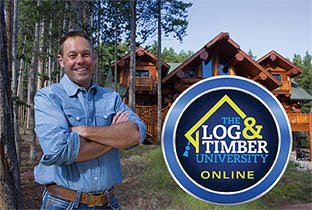



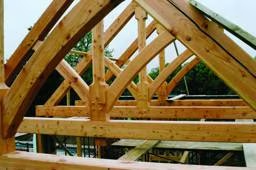

_11868_2023-06-30_11-50-256x288.avif)
